SRAM XX1 Component Group
 In our last issue we managed to slip in a sneak peek at the new XX1 component group from SRAM. Now we can fill you in on all the details and provide some initial impressions. As mentioned previously, XX1 will be the first mass-produced 11-speed MTB group. But rather than adding more gear combinations, SRAM has used it to simplify the drivechain by only running one chainring.
In our last issue we managed to slip in a sneak peek at the new XX1 component group from SRAM. Now we can fill you in on all the details and provide some initial impressions. As mentioned previously, XX1 will be the first mass-produced 11-speed MTB group. But rather than adding more gear combinations, SRAM has used it to simplify the drivechain by only running one chainring.
The 11-speed cassette features an extraordinary 10 to 42 cog range. While the 11-speed hub is no wider than before, the tiny 10-tooth cog has forced a redesign of the freehub body. To begin with, SRAM, DT Swiss and Mavic will offer compatible freehubs, and according to SRAM, plenty more will follow. Those who already own a DT, SRAM or Mavic hub should be able to retrofit an XX1 body to their existing hub.
How did they squeeze in that extra cog? While the freehub body isn’t any wider, the huge alloy 42-tooth cog is slightly concaved and actually overhangs to sit a little further inboard. Clearance between the spokes and the derailleur is no worse than usual, as the massive XX1 dinner plate makes the derailleur cage sit further out from the hub where the spokes have a narrower stance. SRAM has also pushed the 10-tooth cog our closer to the frame to gain a little extra space. Finally, XX1 runs slightly tighter cog spacing with an 11-speed specific chain. A fraction here, a fraction there and hey presto; you’ve got room for an additional cog without increasing wheel dish and compromising strength as a result.
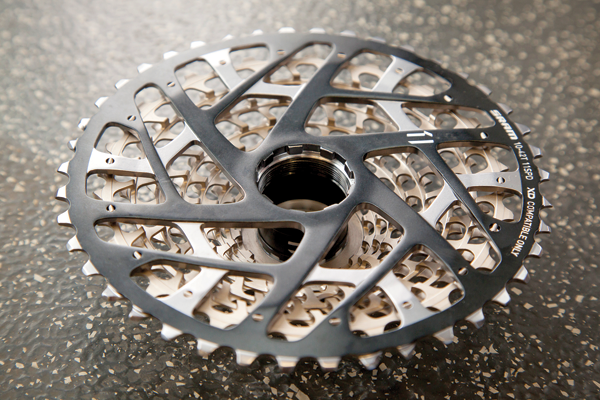
Talk of a narrower chain is likely to get alarm bells ringing with fears of increased wear, but SRAM is claiming greater longevity due to a combination of factors. First up, the chain no longer needs to shift under load between chainrings. In addition to placing less stress on the chain, the links, pins and rollers can be optimised for straight-up durability rather than lateral flexibility for chainring shifting—SRAM claims the narrower 11-speed chain is actually more wear resistant than its 10-speed cousin.
With only one chainring you get an overall reduction in the chain angles, which should also reduce wear and increase efficiency. Finally, the deep-cut teeth on the single chainring should last longer, and if the chainring remains in better shape, the chain should too. Of course, all the wear is directed at one chainring rather than being spread across two or three, but with less cross-chaining and deep-cut teeth, XX1 sounds like a more durable setup—only time will tell.
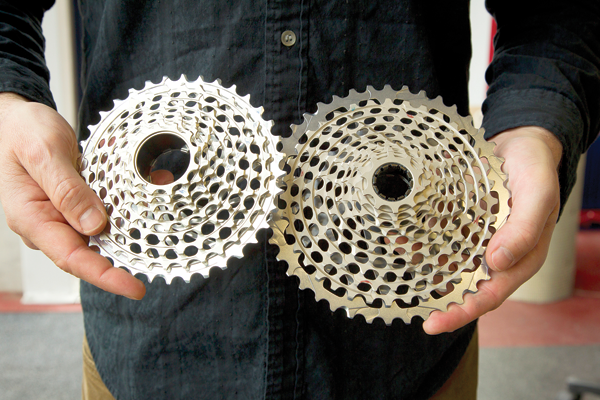
The gearing can be tailored with the different chainring options; SRAM will offer rings in two-tooth increments from 28 through to 38. The actual gear spread provided by the 10 to 42 cassette falls short of a multi-ring setup but not by much—take a look at our gear ratio charts to get a better idea. With the 32-tooth up front, the lowest gear comes ever so close to a 2x10 drivechain that’s using the popular 26/39 chainring option. At the opposite end of the range, the top gear is very close to the second highest gear with said 2x10 combo—you only lose a gear and a half from the total range.
Obviously 3x10 still offers the broadest overall range, letting you ride virtually anywhere, but it suffers with more weight, complexity and the potential for some nasty chain angles. One thing that some riders like about the 3x10 drivetrain is the sweet spot that you get in the middle 32-tooth chainring—it provides a range that’s well matched to most trails and most people. This tends to minimise front shifting where a 2x10 drivechain can leave you with a one chainring that’s too tall and the other too small. In this regard, XX1 trumps them all with an optimised chain line and a gear spread than can be matched to your local trails. The rings are also easy to swap, so you can always vary the gearing to suit a particular ride.
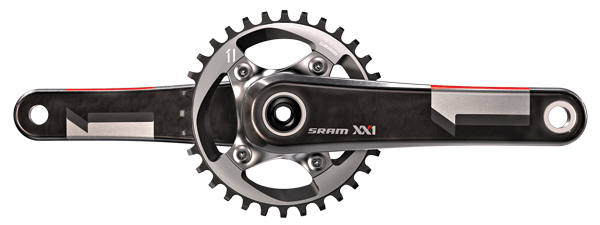
Aside from its massive gear spread (for a single ring setup), the other striking feature is the unique ‘X-Sync’ chain retention system. Every second tooth on the chainring is wider. This meshes closely with the alternating wide/narrow inner link spacing, making it harder for the chain to skip over the teeth bounce off. A ‘Type 2’ spring damper also helps to keep chain bounce in check. The final part is the ‘X-Horizon’ parallelogram. Rather than moving down and across to follow the cassette, the derailleur moves on a horizontal plane. This serves to better isolate it from bump forces and make the mechanism more stable. Some form of chain guide is a must when running a single chainring but that’s not the case with XX1. Even hard all-mountain riding can be done without an additional guide. It’s damn near impossible to manually derail the chain—it literally clings to the front chainring.
SRAM XX is a super-light component group but XX1 is lighter. With only one ring, the cranks save around 40g. The rear derailleur and 11-speed cassette add a few grams but the big weight savings come from removing one shifter (-91g), the front derailleur (-125g) and a cable. Overall it’s approximately 200g lighter than XX.
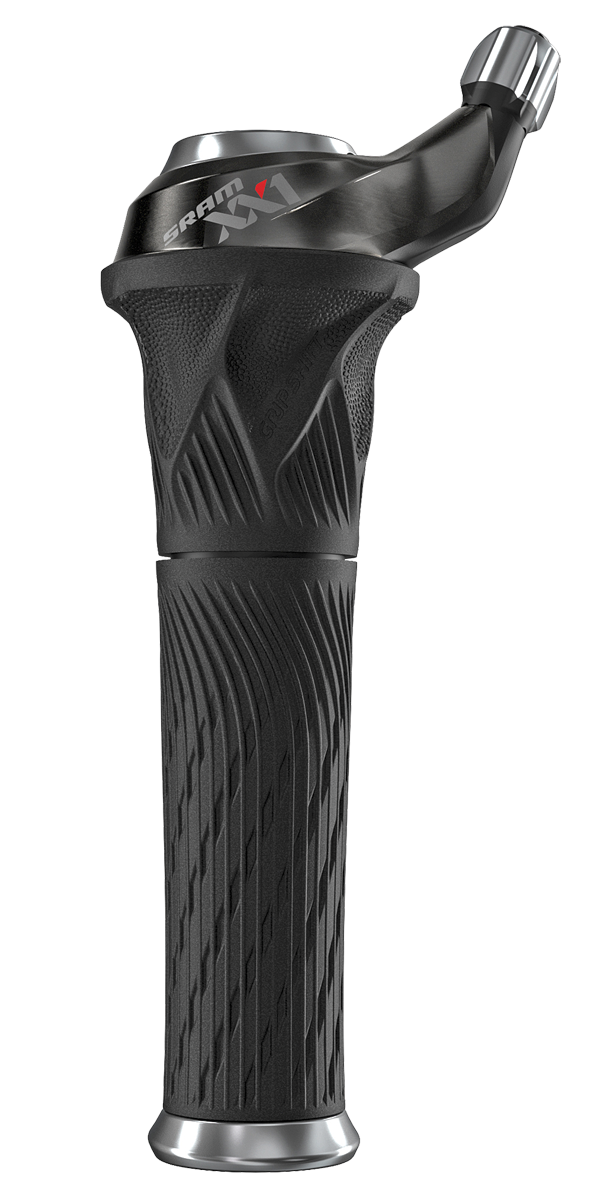
Once you get over the massive 42-tooth rear cog (it’s actually larger than a 160mm brake rotor), the aesthetics are refreshingly simple. With remote suspension controls and dropper posts, it seems that modern bikes keep sprouting more and more cables—XX1 really cleans up the cockpit by eliminating a shifter and cable. Speaking of shifters, XX1 will be offered with both trigger and grip shift options. The triggers that we tried provided a similar feel to the existing X.0 shifters, with a crisp and audible ‘click’ for each gear change.
Using XX1 will provide greater freedom to bike designers, as they no longer need to provide a front derailleur mount. There’s also speculation that XX1 will allow suspension bikes to function better but that won’t always be the case. Most designs actually benefit from varying chainring sizes found on a traditional drivetrain. You usually get a stronger anti-squat effect in the smaller chainrings, so the suspension tends to firm up when climbing—just what you need really.
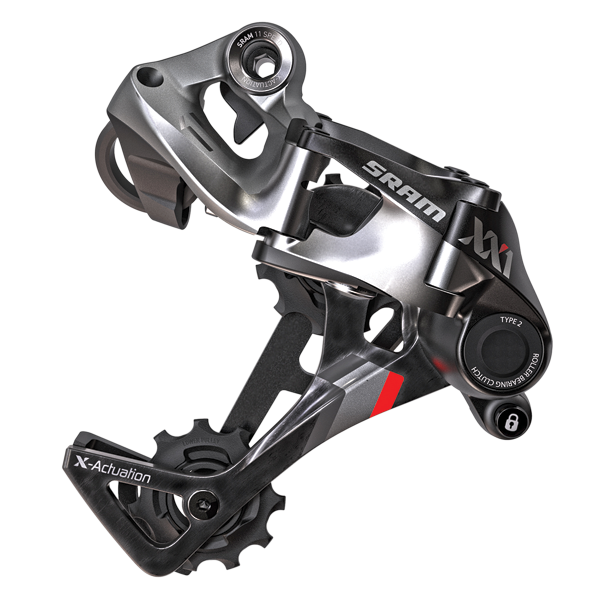
We’re certainly keen to get some extended time on this new drivetrain concept. It will be interesting to see how it fares in the long-term and check if the guide-free chain retention continues to work its magic with some wear in the system. While XX1 will be beyond the budget of most, it’s a pretty safe bet that SRAM will introduce the same concept at lower price points in the coming years. XX1 won’t be replacing 2x10 and 3x10 gear systems but it presents a very appealing option for those who don’t need such a wide gear range.
Monza Imports (03) 8327 8080 / www.sram.com
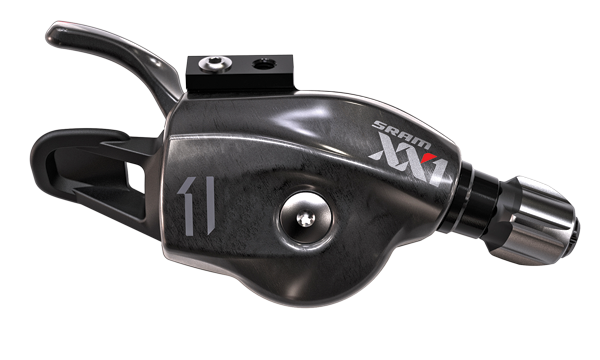


 In our last issue we managed to slip in a sneak peek at the new XX1 component group from SRAM. Now we can fill you in on all the details and provide some initial impressions. As mentioned previously, XX1 will be the first mass-produced 11-speed MTB group. But rather than adding more gear combinations, SRAM has used it to simplify the drivechain by only running one chainring.
In our last issue we managed to slip in a sneak peek at the new XX1 component group from SRAM. Now we can fill you in on all the details and provide some initial impressions. As mentioned previously, XX1 will be the first mass-produced 11-speed MTB group. But rather than adding more gear combinations, SRAM has used it to simplify the drivechain by only running one chainring.

